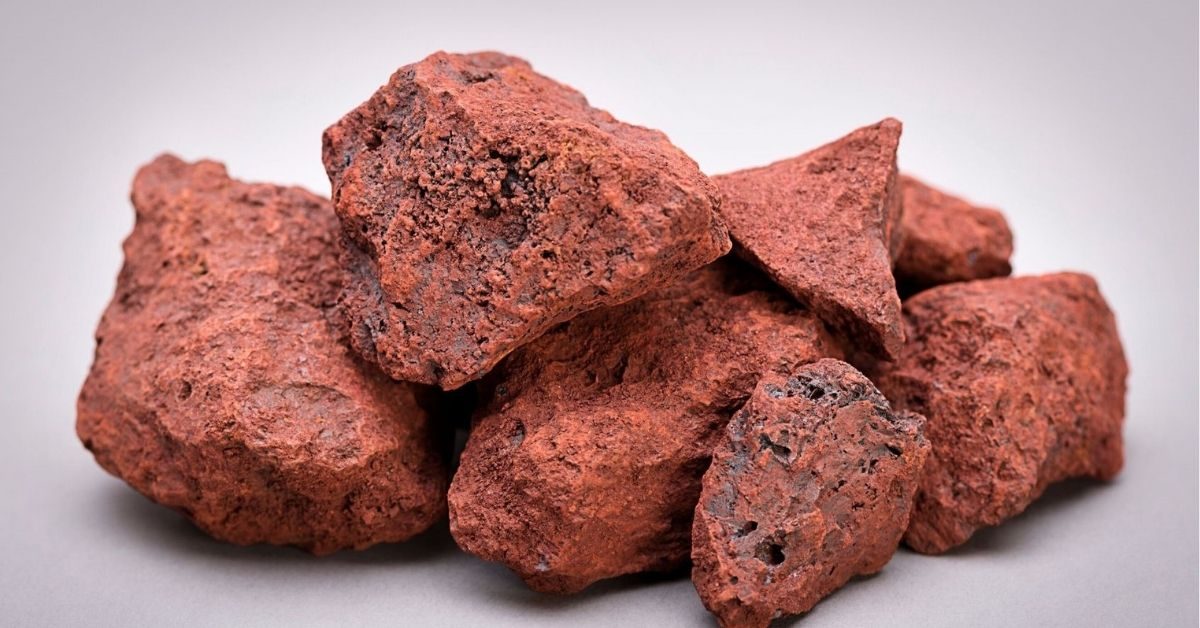India’s largest government-owned iron ore producer NMDC has recently reduced the price of 65% ferrous (fe) content lump material by Rs 200 to Rs 5,950 a tonne and that of 64% fe endowed fines by Rs 400 to Rs 4,760 a tonne. Earlier, since July this year, the company, which is targeting a production of 47 million tonnes (mt) during 2021-22 against 35 mt achieved last year, had three occasions to cut prices of lump and fines.
Steelmakers benefiting from elevated prices of finished products – for example, according to Argus, Indian hot rolled coils (HRC) commanded a price of Rs 65,000 a tonne at this month’s beginning, registering a smart rise of 62% from a year earlier – would have found a cause for celebration from iron ore prices fall had not prime hard coking coal been trading at a punishingly high $410 a tonne. The price of coal that is used in blast furnace (BF) as a reductant has appreciated more than three times since early 2020.
Trade officials say production halts at mines in China’s coking coal production hub Shanxi Province and also the fall in September exports from Australia’s principal producing centre Queensland gave leg ups to coal prices. In the case of iron ore, government enforced steel production discipline in China, where the making of the ferrous metal is a major source of carbon emission and therefore, fouling of the environment causing annoyance to president Xi Jinping is seen to be prime reason for major price setbacks of iron ore in the past few months, whereas coal production disruptions in China and supply setback from Queensland remain a cause of grave concern for BF based steelmakers everywhere.
India being very largely dependent on foreign origin coking coal, there will now be a major incremental outgo of foreign exchange on imports of this steelmaking ingredient. The country imported over 51 mt of coking coal in 2020-21. Unlike thermal coal, the country has not only limited resources of coking coal but what is available contains very high percentages of ash. While Australia remains the principal source of our coking coal imports, we buy metallurgical coke principally from Poland, Columbia, Russia and Japan.
With resources close to 30 billion tonne (bt) placing India among the world’s major owners of iron ore, the country has capacity to generate large export surpluses, provided of course mines in Goa that have remained shut since mid-March 2018 on Supreme Court order return to life and miners in Karnataka get court permission to export. Remember India, then as the world’s third largest exporter after Australia and Brazil, shipped 117 mt of iron ore to the world market in 2009-10. But then because of a combination of court orders and New Delhi’s ill-advised pegging of export duty at annoyingly high levels, Indian exports hit lows of first less than 16 mt in 2013-14 and then to 5.5 mt in 2014-15. With India climbing down on import duty on low and medium grades of ore, exports did look up since.
When it comes to iron ore exports, the overwhelmingly biggest destination for India is China. For example, according to China’s General Administration of Customs, that country’s imports of Indian iron ore jumped 88% last year to 44.8 mt from 23.8 mt in 2019. Significantly, however, the rise of 21 mt was just a 1.5% of the total 1.4 bt that China imported in 2020. While such exports to China constituted the most in several years, the redeeming part is that almost two-thirds of shipments had less than 48% iron content. That brings relief to the iron ore industry here since local steelmakers have a distinct preference for lump and high fe content fines. A perennial problem for the industry is a mountain of mine head stocks that in not very long ago climbed to about 165 mt. In a big way, therefore, fortunes of Indian producers of iron ore in terms of exports and prices are linked to China related trade.
This cannot be otherwise since China alone accounts for close to two-thirds of seaborne trade in iron ore, which is the world’s second most traded commodity after crude oil. No wonder that when Beijing mandated nationwide steel production curbs since June in the wake of fading of stimulative spending, Asian ore prices saw dramatic correction in the third quarter with the index IODEX falling 46%. In fact, the prices will continue to remain under pressure due to the combined pressure of low steel production and power shortages in China. With some Chinese mills coming under pressure to resell the contracted iron ore volumes, the market found itself into an oversupply position.
The Chinese building and construction sector alone accounts for anything between 50% and 60% of total steel use. Steel demand there has started falling in recent months driven by government attempts to cool the overheated property market and also deleverage the high levels of debts in the economy. Property developers, which already have piled up large volumes of debts, now have to contend with tighter borrowing criteria. Parallel to applying brake on construction activity, Beijing has imposed emission curbs ranging from 30% to 50% on a number of steel mills in Tangshan, the country’s biggest steelmaking centre. That all these government policies are having a bite on steel production is borne out by August production falling by a steep 13.2% to 83.2 mt year-on-year. In July too production suffered a setback of 8.4% to 86.8 mt. No wonder, the Australian department of industry and resources has forecast iron ore price falling to $93 a tonne by 2022 end.
Source : Hellenic Shipping News







